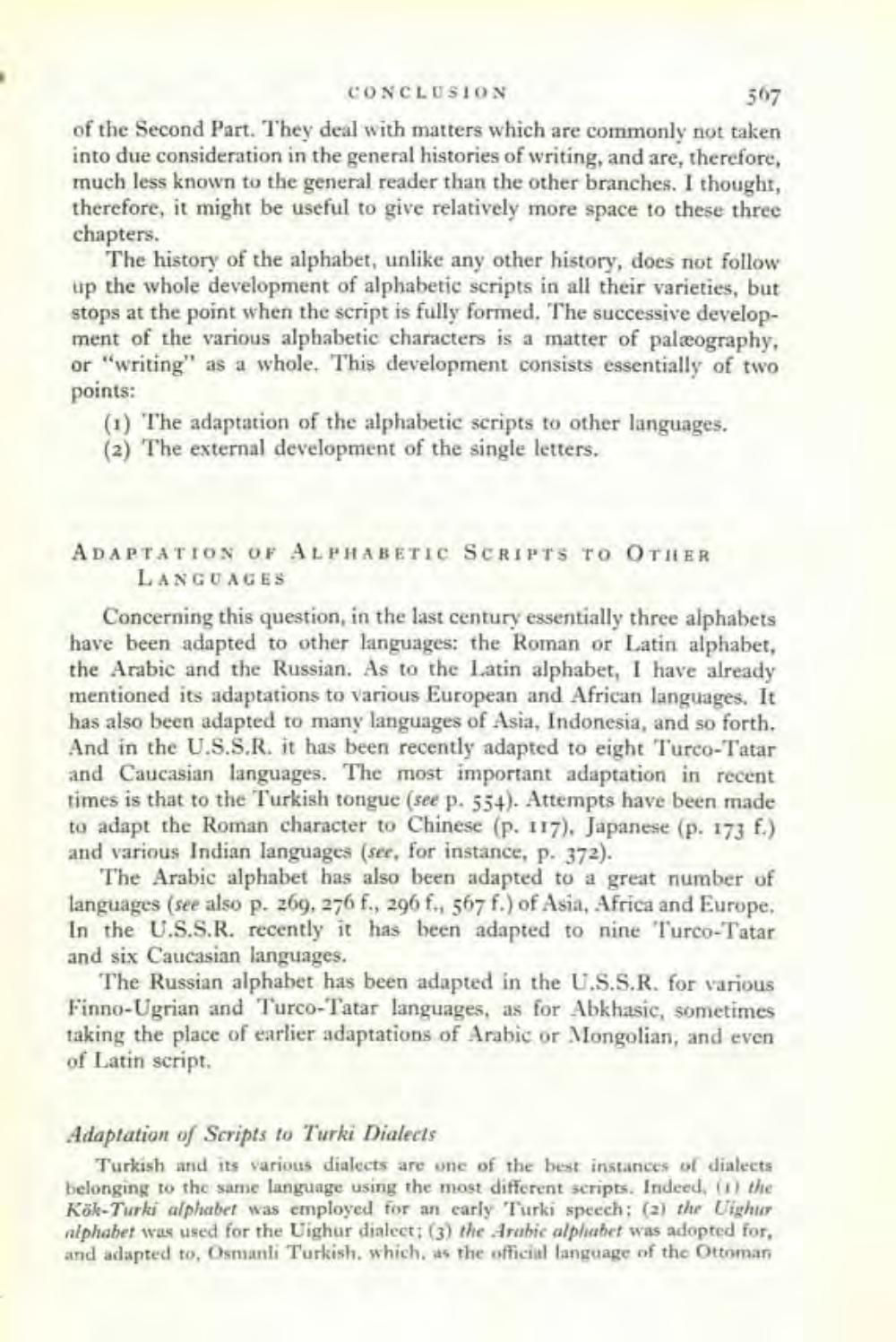________________
CONCLUSION
507 of the Second Part. They deal with matters which are commonly not taken into due consideration in the general histories of writing, and are, therefore, much less known to the general reader than the other branches. I thought, therefore, it might be useful to give relatively more space to these three chapters.
The history of the alphabet, unlike any other history, does not follow up the whole development of alphabetic scripts in all their varieties, but stops at the point when the script is fully formed. The successive development of the various alphabetic characters is a matter of palæography, or "writing as a whole. This development consists essentially of two points:
(1) The adaptation of the alphabetic scripts to other languages. (2) The external development of the single letters,
ADAPTATION OF ALPHABETIC SCRIPTS TO OTILER
LANGUAGES Concerning this question, in the last century essentially three alphabets have been adapted to other languages: the Roman or Latin alphabet, the Arabic and the Russian. As to the Latin alphabet, I have already mentioned its adaptations to various European and African languages. It has also been adapted to many languages of Asia, Indonesia, and so forth. And in the U.S.S.R. it has been recently adapted to eight Turco-Tatar and Caucasian languages. The most important adaptation in recent times is that to the Turkish tongue (see p. 554). Attempts have been made to adapt the Roman character to Chinese (p. 117), Japanese (p. 173 f.) and various Indian languages (see, for instance, p. 372).
"The Arabic alphabet has also been adapted to a great number of languages (see also p. 269, 276 f., 296 f. 567 f.) of Asia, Africa and Europe, In the U.S.S.R. recently it has been adapted to nine Turco-Tatar and six Caucasian languages.
The Russian alphabet has been adapted in the U.S.S.R. for various Finno-Ugrian and Turco-Tatar languages, as for Abkhasic, sometimes taking the place of earlier adaptations of Arabic or Mongolian, and even of Latin script.
Adaptation of Scripts to Turki Dialects
Turkish and its various dialects are one of the best instances of dialects belonging to the same language using the most different scripts. Indeed, in the Köl-Turki alphabet was employed for an early Turki speech; (2) the Uighur alphabet was used for the Uighur dialect: (3) the drabic alphabet was adopted for, and adapted to, Osmanli Turkish, which is the official language of the Ottoman




